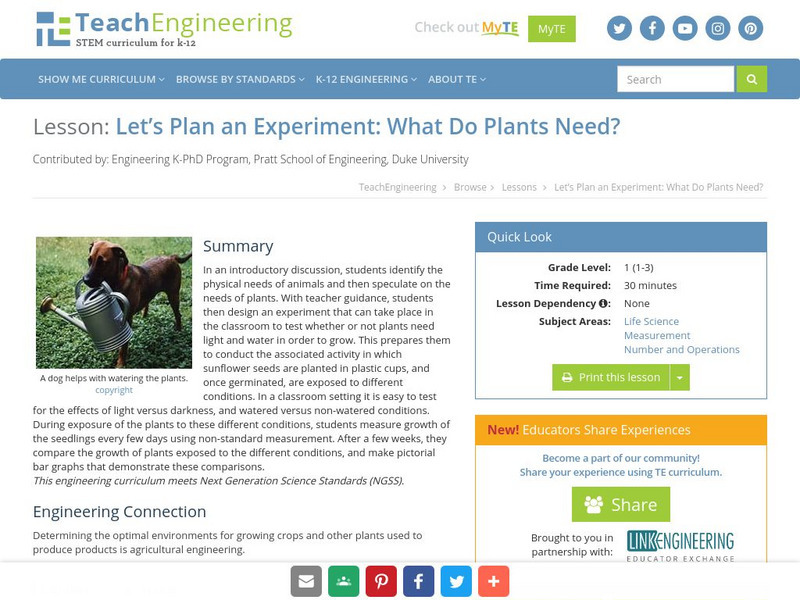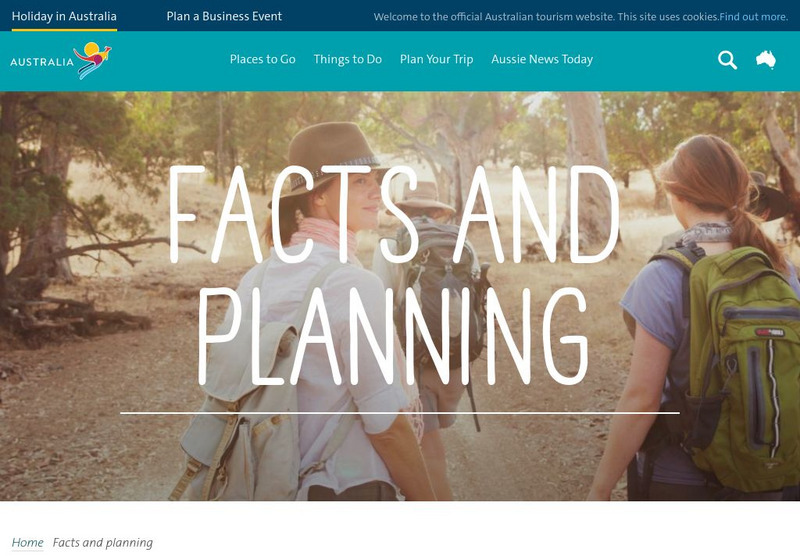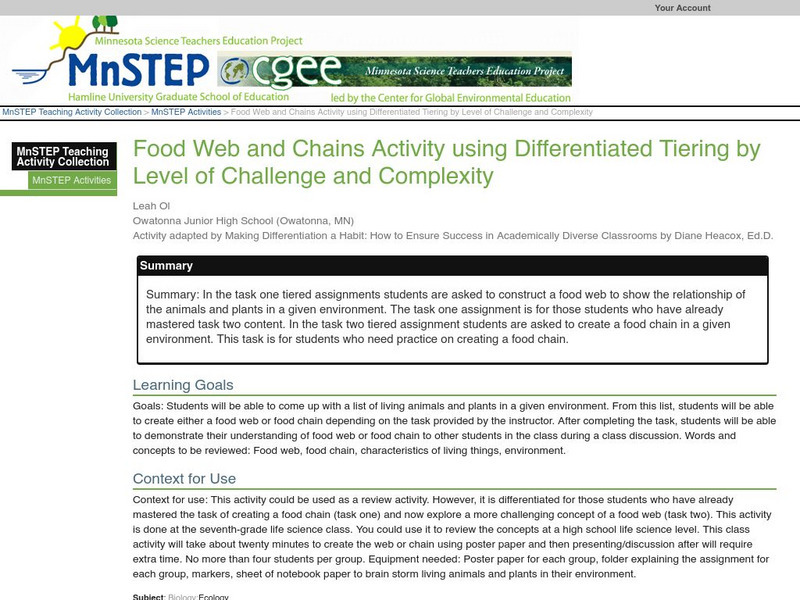PBS
Pbs Learning Media: Animals and Plants Can Live in a City!
For this interactive lesson, students learn that animals need air, food, water, and shelter, while plants need air, sunlight, and water. Students watch videos and engage with drawing and sorting activities to reinforce their learning....
TeachEngineering
Teach Engineering: Who Needs What?
The teacher leads a discussion in which students identify the physical needs of animals, and then speculate on the needs of plants. With guidance from the teacher, the students then help design an experiment that can take place in the...
TeachEngineering
Teach Engineering: Biodomes
Students explore the biosphere's environments and ecosystems, learning along the way about the plants, animals, resources and natural cycles of our planet. Over the course of lessons 2-6, students use their growing understanding of...
Other
Australian Tourism: Facts and Planning
This is the official website for Australian tourism. It presents facts about Australia's geography, weather and climate, time zones, currency, and plants and animals, accompanied by excellent imagery. A useful feature of this page is...
Science Education Resource Center at Carleton College
Serc: Mn Step: Who Am I? Plant and Animal Life in a Pond
After learning about pond life, learners play a game where they must ask questions to discover the name of an animal or a plant displayed on a card placed on their backs. A set of images, a questioning sheet, and a list of vocabulary...
Bio Topics
Bio Topics: Photosynthesis
This site details the process of photosynthesis. Photosynthesis is the process of the production of oxygen by plants and carbon dioxide by animals, both of which are needed for respiration purposes.
Science Education Resource Center at Carleton College
Serc: Differentiated Tiering Food Web and Chains Activity
Two differentiated tasks about food chains and webs. In the more challenging task, young scholars construct a food web to show the relationship of the animals and plants in a given environment. In the lower level task, students create a...






